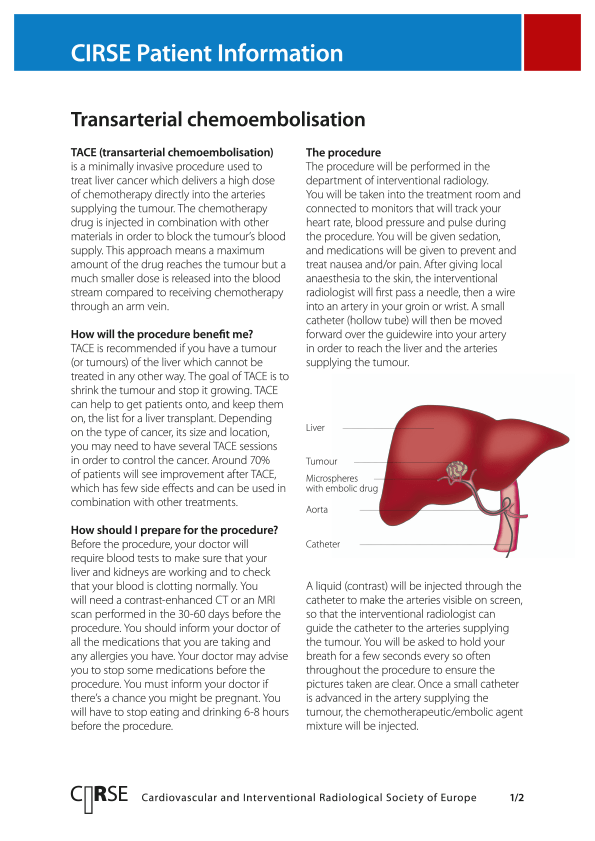Symptoms
Generally, liver tumours are discovered during routine screening or when they cause symptoms because of their size or location. Common symptoms include weakness, fatigue, weight loss and loss of appetite. Other possible symptoms are fever, night sweats and pain in the abdomen, but these occur less frequently.
Patients with chronic liver disease generally have symptoms of advancing cirrhosis, such as jaundice (meaning the skin and whites of their eyes turn yellowish), itching, an enlarged spleen, severe weight loss and weakness, as well as bleeding in the upper gastrointestinal tract, caused when blood is re-routed through blood vessels in the stomach and gullet, which then swell and split.
Diagnosis
There are a number of techniques that your doctor can use to diagnose liver cancer and determine its severity (called staging), including imaging procedures like ultrasound, CT and MRI.
In most cases, a biopsy will be necessary to determine the exact type of cancer and to judge its aggressiveness. These are now commonly carried out with image-guided, minimally invasive techniques that involve inserting a needle directly into the liver through the abdominal wall in the stomach area.
Other specific options are available depending on the exact type of liver cancer involved, such as testing blood for tumour markers or using imaging techniques.
Treatment
Both traditional surgery and interventional techniques play a role in treating liver cancer. If you have HCC, your surgical options include removing all or part of the liver and liver transplantation. However, many patients do not qualify for this treatment for various reasons.
Interventional alternatives include several percutaneous thermal ablation techniques, meaning that a needle is inserted into the liver tumour under image guidance, through which extreme temperatures are delivered to destroy the tumour.
Types of percutaneous thermal ablation techniques include radiofrequency ablation (which uses radiofrequency energy), microwave ablation (using microwave heat), cryoablation (in which a gas is used to freeze the tissue), or electroporation (using a powerful electrical field using high-voltage direct current).
In some cases, the liver tumour has an unusually high number of blood vessels attached to it. This increases the risk of bleeding, making it harder to remove the tumour. A treatment called transarterial chemoembolisation can relieve the pain and suffering caused by these tumours. In this procedure, an interventional radiologist delivers a high dose of a cancer-killing drug directly into the tumour.
Another possible treatment is radioemboliastion, a similar technique to transarterial chemoembolisation that is used to extend and improve the quality of patients’ lives. During this procedure, an interventional radiologist injects radioactive microspheres directly into the tumours, a targeted approach that destroys them or slows down their growth rate.

